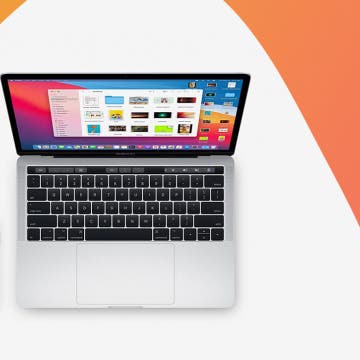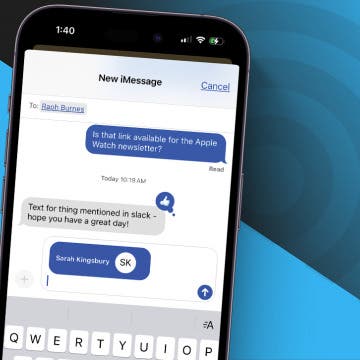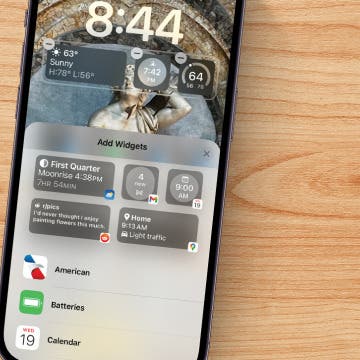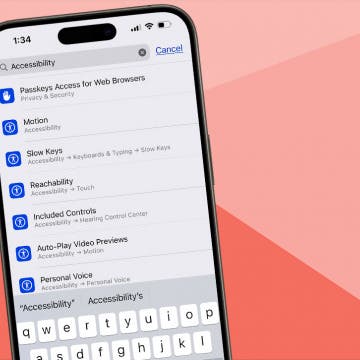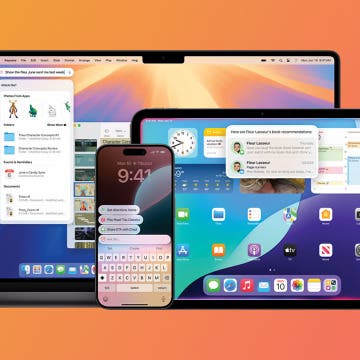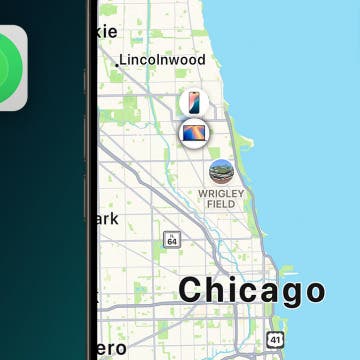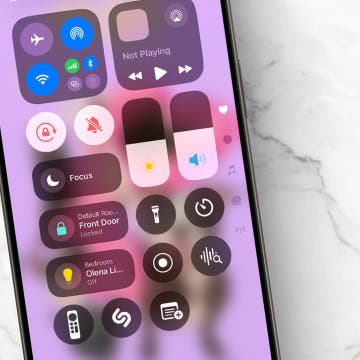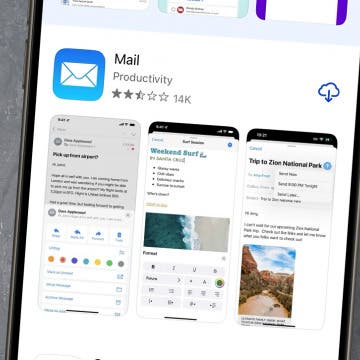- If you just tap a link on a Web page, the current one will be unloaded. You can surely return to it by tapping the “back” icon available in all iPhone Web browsers, but reloading a Web page on a resource- (processor power) and often bandwidth-constrained mobile device like the iPhone may be in the area of tens of seconds, unlike on a desktop computer with at least an order of magnitude faster processor and, in general, much faster Internet access. There, in addition, clicking the “back” icon doesn’t in general reload pages – unlike on the iPhone, where they are always reloaded.
- There may be link directories (for example, a forum list – e.g. the one HERE) you want to open a lot of subpages (in the case of the DPReview link, threads) from as quickly as possible. During this, you may prefer not to have to return to the link directory. For example, at, say, DPReview, I very often open 10-15 threads in 10-20 seconds in iCab Mobile (my favorite Web browser) in the background. It’s way faster and more effective than either opening a page in a new tab and, then, switching back to the original thread list or always reloading the latter if you open the discussion threads in the same window (tab) as the directory list.
- open new pages (preferably in the background)
- if no background opening is possible, switching back to the original one to continue opening other tabs (web pages)
- quickly (!) close tabs (which can be of extreme importance if you, like me, prefer opening tons of tabs and, before doing so, always forget to close the already-existing ones)
Feel free to ask for further advice if you would really want to speed up your Web browsing and have a problem.
Safari (the built-in Web browser coming built-in to the operating system): right at the beginning, I start with long-tapping the first page (“a”). The context menu is displayed soon (at 0:02); from it, I select “Open in New Page” to display the page in a new tab. The new page is loaded and displayed at 0:04; then, I immediately tap the lower right “Tabs” icon to bring up the tab list so that I can switch back to the original link page to continue opening new pages. In the tab list (which, now, only has two tabs), I swipe to the right so that I can switch to the original link collection tab. At 0:06, it’s displayed. I tap and hold the “b” link; the link-specific context menu is displayed at 0:08. Again, I select “Open in New Page”. As you can see in the next two seconds, the new page is opened right next to the current one, shifting the previously opened ones to the right. This is why I needed to swipe to the right only once to return from the active “b” page to the original link page at 0:12. Then, I continue with opening pages (and, after doing this, immediately returning to the main page to continue opening new ones): “c” at 0:16 and, finally, “d” at 0:20.
After this, I bring up the tab list (again, the lower right icon) and swipe fully to the right – and, then, back, to show you the current titles and thumbnails. As you can see, as I haven’t scrolled any of these pages yet, the thumbnails all show the top of the page. At 0:27, I tap the “b” thumbnail to show you whether, after scrolling the web page a bit, the thumbnail view is also modified. At 0:30, I do the same with the “a” page. At 0:33, you can clearly see the thumbnails of both pages show the current position (and view) of the page – as one would expect of a good Web browser. At 0:35, I do the same to page “c”. Then, at 0:40, I start closing all the tabs to show you how much time it takes to close them all. As you can see, it’s pretty fast.
To show you it was because this switch was in “On” that the “g” and “j” pages opened in the background when using the “Open page in Tab” tap-and-hold menu item, I show you opening Web pages after disabling the switch result in iCab’t immediately switching to them. I tap-and-hold the “k” link and, from the context menu (at 0:43), I select “Open page in Tab”. As you can see, the browser immediately switches to the new tab – as opposed to the case with the “g” and “j” pages, when the “Open Tabs in Background” switch was still in the “On” position.
Now that iCab has automatically switched to the new page, I scroll down it a bit to show you whether the tablist thumbnail image shows the new, current in-page position. At 0:48, I tap the “tabs” icon (the third one from the left) and just wait (by not touching anything) to show you iCab even scrolls down to the current page, which is extremely useful when you have tons of tabs open. (This is a comparatively new feature implemented in the recently released 2.0 version based on my request. I find it very annoying to swipe the tablist upwards a lot of times every time I wanted to switch to a recently opened tab; that is, one that is somewhere at the bottom of the tab list. This is why I asked the developer to implement the feature.) This is pretty much comparable to Safari’s doing the same; nevertheless, with Safari, you would never end up having to swipe too much to find the tab you’re looking for as the number of tabs is severely limited; that is, 8.
After this, I scroll up the tablist and, at 0:52, I select “a” at the top. (Incidentally, as you can see, when you open new pages, they’re put at the end of the tablist, as opposed to Safari, which puts them right after the current tab. This is why, in this iCab demo, they’re in ascending order – remember I opened them in the same order (a, b, c, d etc.). I scroll it down a bit and, at 0:57, switch to the tablist again; as you can see, the overview (thumbnail) of page “a” has indeed changed – and the tablist didn’t scroll down, unlike with the case of my opening page “k” at the bottom and, from there, switching to the tablist. This is because page “a” is at the top of the tablist; this is why you coulnd’t notice any kind of scrolling down. After this, I scroll down to “k”, scroll the page again; then, switch to page “g”, just to show how nicely the tablist scrolls down to display the currently active tab. At 01:18, after some scrolling around, I switch to Portrait view to show you how the user and the tablist interface looks like in that orientation.
At 01:29, while still in Portrait orientation, I switch to full screen mode to show you it’s still very easy to access the tablist from there, without having to return to non-fullsceen mode (by tapping the lower right icon in fullscreen mode). I tap the “tab” icon (it’s the lower left one in fullsceen mode) at 01:32; I select “g” at 01:38 from it. As you can see, you’re automatically returned to the full screen mode after selecting another tab. Finally, starting at 01:42, I start demonstrating how quickly you can close tabs in iCab Mobile. Note that, at first, I mis-tapped the “X” icon of page “b” – if you don’t tap the close icon precisely enough, you’re taken to it instead of it being shut down. This happened at 01:43. Nevertheless, at 01:44, I returned to the tablist mode to try to continue closing tabs once again; now, I succeeded at it. Note that I close them starting with the uppermost main directory page and closing them all by keeping tapping the screen in the same position. As you can see, one can quickly close a LOT of tabs in little time – as opposed to most other Web browsers. This is also a big advantage of this browser.
At first, at 0:10, I set these switches to On and Off, respectively (from the opposite setting, which I’ll present later), so that I can show you the browser immediately switching to new pages when opening them in a new tab. At 0:17, I just (short-)tap “a” to show the effects of short taps (and also switch back to Landscape). As you can see (the “Back” arrow (the one in the lower left corner) becomes selectable and the “Tabs” icon (the last-but-one on the right). At 0:20, I bring up the tablist (again, using the last-but-one on the right icon); this time, as, so far, I’ve only opened one tab, it only shows one item. I immediately (at 0:21) tap it to activate it (again). Then, after returning to the “a” page, at 0:23, I tap the “back” arrow to return to the directory list to show you some more advanced features; that is, real multitabs.
At 0:26, after scrolling up a bit, I long-tap “h”; at 0:27, the context menu is displayed. There, I quickly select the “Open Link (New Tab)” item. The “h” page is, then, opened in the new tab – and the browser immediately switches to it (at 0:28). At 0:29, I bring up the tablist; as you can see, it indeed has two items (two tabs). At 0:30, I switch to the first, the directory one (BTW, note that the tablist item still shows the previous, “a” thumbnail and title!), scroll up and start tap-and-holding “a” at 0:33. I select the Open Link (New Tab) item again to open it in a newly created tab. Again, the browser (as it should) switches to it. Then, I, by mistake, tap the “Downloads” icon (the center one; note that the browser has received a download manager in the most current version; a really decent move) at 0:38. At 0:43, I switch back to Portrait to be able to access and change settings; now, I change the two switches I initially negated, “Switch to a new Tab” and the “Load Tab in Background”, to Off and On, respectively, to enable background page loading. I do the state change at 0:47; after exiting Settings and returning to Landscape, I (at 0:53) open the tablist and switch to the first item (again, it’s erroneously called “a”) to navigate to the directory view. There, I tap-and-hold “a” (at 0:55). I, again, select “Open Link (New Tab)” from the context menu (at 0:57). As you can see, now, the system doesn’t switch to the new tab. I repeat this for “b” (which just doesn’t want to succeed; for some reason, I’m only presented the Open and Copy menu items and nothing else), “c” (at 01:12), “d” (at 01:15), “e” and “f” (at 01:17 and 01:20; these – particularly the second one – take a bit to be registered by the system).
Journey
After scrolling to the link section and zooming in, at 0:06, I start with tap-and-holding the “a” link and selecting the “Open in New Tab” menu item from the context menu. As you can immediately after this, the browser doesn’t switch to the new page; however, the tab counter increases to 2 in the bottom right corner (from 1/1 to 1/2, showing there are two pages open and you’re still on the first one).
After this, I continue with opening other Web pages in the background with the same tap-and-hold and selecting “Open in New Tab”: “b” at 0:12, “c” at 0:15, “d” at 0:18. After this, I start showing you how you can switch between the pages by tapping the two arrows on the two sides of the page / tab counter (which, now, of course, reads 1/5). By single-tapping the right one (at 0:20), I switch to the “a” page, which was opened first. (Note that Safari seems to be the one browser to open new pages in tabs right after the current one; all the other browsers use the “first in, first out” approach instead.) After this, I continue switching to the new tabs; at 0:22, by tapping the right arrow again, I switch to “b” (the third tab). At 0:23, I iterate over “c” and “d”. The next tap on the right arrow takes me back to the very first tab, the original directory page (tab number 1, as you can also see in the lower right corner). In Journey, this is the only way to switch between tabs – and, of course, using the left double-arrow to switch to the previous one, as is also shown starting at 0:27.
Perfect Browser
This browser has recently received a lot of welcome goodies and has become one of the most recommended titles. Let’s take a look at how it handles multitabs!
At 0:02, I start with tap-and-holding the “a” link. From the context menu (at 0:03), of course, I select “Open in New Tab”. The browser automatically switches to it; therefore, I manually switch to the original (dictionary) page back by tapping its always-visible (note that it can be hidden) tab in the upper left corner. (Note that, at first, the iPhone didn’t seem to register my taps; this is why I had to try more than once.) At 0:09, I continue with opening new tabs with page “b”; when it opens, I (again) switch back to the original page (at 0:14) to go on with opening other pages (“c” at 0:16, “d” at 0:22, “e” at 0:28). Note that, after opening more than three tabs, upon opening a new one, I need to manually swipe the tablist to the right in order to be able to access the first tab(s).
After this, at around 01:00, I start demoing how tabs can be closed - or, at least, emptied. Only tabs at the end can be completely removed; if you tap the “X” in the upper right corner of a tab, you only empty it but, physically, the tab isn’t removed, it stays there as a placeholder. At 01:02 (after some failed attempts – it’s pretty hard to close tabs if you don’t tap precisely) I remove the contents of the “b” page; at 01:11, that of “e”, at 01:15, that of “d”, at 01:20, “f”, at 01:23, “g” and at 01:23, the last tab, “h”. As you can see, this one is indeed fully removed (again, as it’s the last tab in the row). After this, I close all the other tabs (in turn, always closing the last one) to show you how much time it takes to do this. As can be seen, it can be done pretty quickly.
Oceanus
Oceanus has two tabbing modes. At first, I show you the “Table list style” (which can be set from inside Settings – I start the video showing you this). At 0:05, I long-tap “a” and select opening the page in a new tab. As you can see, the browser automatically switches to it – there is no way of background opening tabs in Oceanus.
At 0:13, I open “b” and, at 0:19, by bringing up the tablist, switch back to the original directory page. After this, I (in vain) try to open “c” in a tab (that is, to bring up the context menu); the first attempt (at 0:33) to do this with “d” results in it being opened in the current tab. This is why I tap “back” again so that I can re-try long-tapping it to bring up the context menu. After some lengthy attempts, at 0:41, I finally succeed in this.
Then, after the browser switching to the new tab and my bringing up the tab list, at 0:47, I start demoing deleting tabs from the tablist. This, as with VanillaSurf, needs to be done using the standard “left/right swipe” and, then, tapping “Delete”. This means it takes some time to close more than a handful of pages – as opposed to, say, iCab, Safari, Journey or Perfect Browser.
When returning to the Web pages, tapping the “tabs” icon (again, the sixth one from the left, between the “full screen” and the “search” icons) shows the desktop-style tabs at the top of the screen. At first, I forgot I had closed all tabs except for two; this is why I (in vain) try to move the tab list to the left (by right-swiping it). Then, finally, after realizing I’ve long ago closed the original “directory” page, at 01:22, I start editing one of the linked pages’ URL in the address bar (at first by displaying it by tapping the “down” arrow in the upper right corner) to get back to the original one.
On the directory page, after scrolling down and zooming in, at 01:32, I try long-tapping “a” to bring up the context menu. I fail at this – the browser loads the page in the current tab; therefore, I switch back to the previous (the directory) one at 0:40. For some reason, my subsequent tap-and-hold operations don’t work after this, either. (Hope you have better luck.)
As you can see, the link is indeed opened in a brand new, top-level window. I move it away (dragging it on the top) and go back to the original “directory” page to continue opening pages. Fortunately, this time, opening the “c” page happens much faster than in the previous occasion; now, the context menu is displayed at 01:09. The same stands for “d”, which I open in a new window at 01:18.
With the latter (page “d”), I start showing how you can “dock” your page to speed up switching between the virtual windows (that is, opened Web pages). To do this, I tap the icon in the top right on the “d” window at 01:20 (after dragging it back to the left half of the screen so that I can regain access to the icon). Then, at 01:21, I tap the big circle at the bottom center to bring up the docking (“Add to Dock”) dialog. I don’t do anything to the title / URL – just tap Save in the bottom right corner (at 01:24). Ater this, I inadvertently activated the “Favorites” icon, which was displayed right under the “Save” button (this is why I activated it by mistake). Now that I’ve docked page “d”, I continue docking other pages; this time, I do this to page “b” at 01:39, “c” at 01:50 and the main directory page at 02:00.
To do this, just tap the bottom area of the screen (NOT any individual window’s top right corner) and, then, the already-known big round icon. You’re shown the pages you’ve added, starting from the left. Note that this isn’t strictly a tabbed view – if you close individual windows (by tapping the red X icon in their upper left corner), these docked icons remain here. They must be removed by hand. Also note that, unfortunately, the icon list in no way contains real thumbnails (that is, minimized versions of the current view), as opposed to, say, iCab Mobile, Safari or VanillaSurf. There are no titles either. Note that the dock is also more of a favorite list – if you tap an icon here, the page will be reloaded and entirely scrolled up. (That is, you also lose your current position inside the document.)





